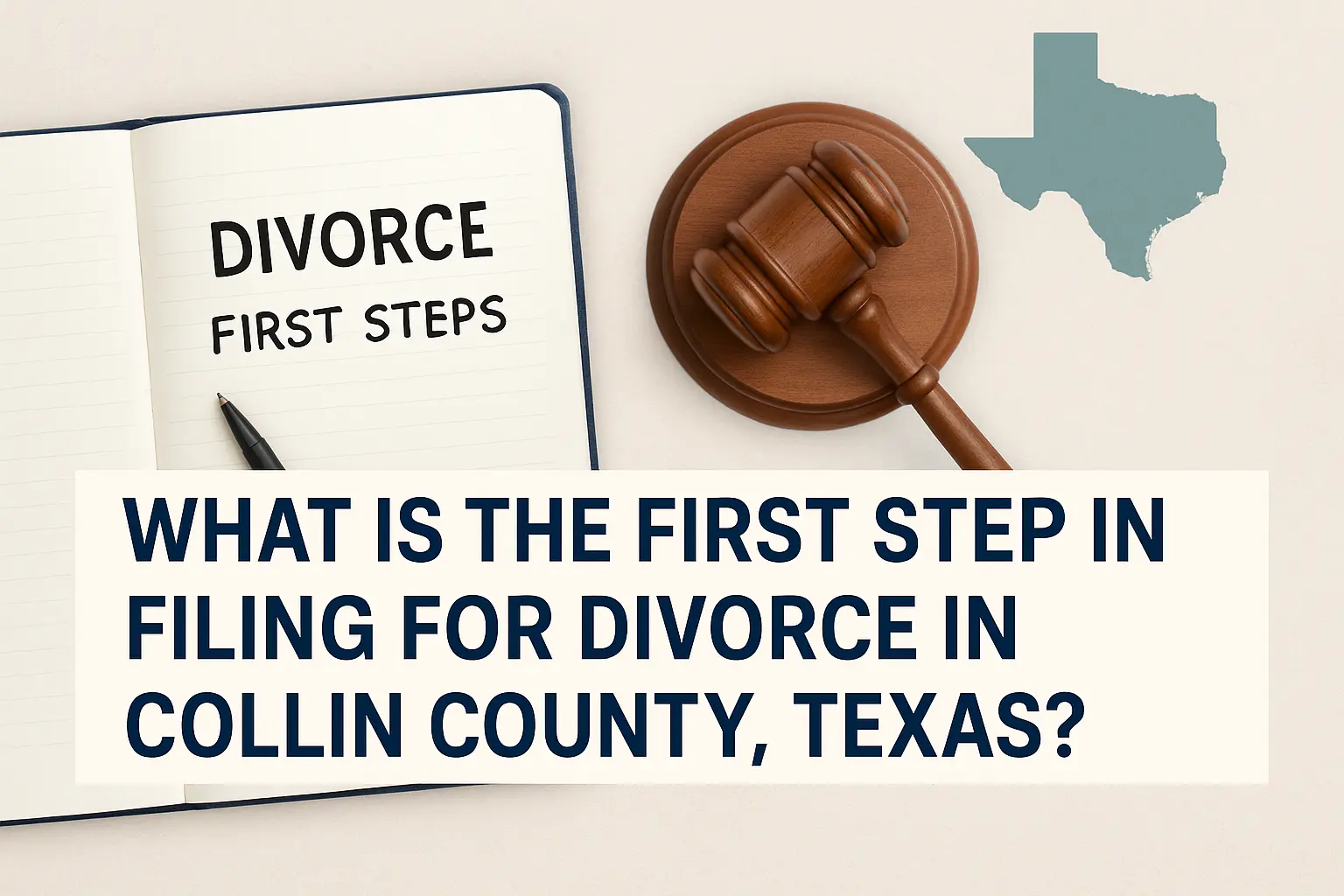
filing for divorce in Collin County Texas
Divorce is rarely easy, but understanding the legal process can help reduce stress and avoid unnecessary complications. If you’re considering filing for divorce in Collin County, Texas, here’s a guide to help you navigate the journey with clarity and confidence.
filing for divorce in Collin County Texas
Understanding Divorce in Texas
In Texas, divorce is legally known as a dissolution of marriage. Texas is a community property state, meaning most property acquired during the marriage is considered jointly owned and will be divided equitably — though not necessarily equally — between the spouses.
Texas allows both no-fault divorces (where neither spouse is blamed) and fault-based divorces (such as for cruelty, adultery, or abandonment). In Collin County, like elsewhere in Texas, no-fault divorce — citing “insupportability” — is the most common and generally the simplest route.
Residency Requirements
Before filing in Collin County, make sure you meet the Texas residency requirements:
At least one spouse must have lived in Texas for the past 6 months, and
One spouse must have lived in Collin County for at least 90 days before filing.
Steps to File for Divorce in Collin County
1. Prepare the Petition
The process begins with filing an Original Petition for Divorce at the Collin County District Clerk’s office. This document outlines your intent to divorce and states your grounds.
You’ll also pay a filing fee, which can vary depending on the circumstances (around $300–$350, though it may change). If you cannot afford the fee, you can request a waiver by filing a Statement of Inability to Afford Payment of Court Costs.
2. Notify Your Spouse
After filing, you must officially notify your spouse (called service of process). You can have them served by a constable, sheriff, or a private process server. If your spouse agrees to the divorce and signs a Waiver of Service, this step may be simplified.
3. Wait for the Mandatory Waiting Period
Texas law requires a minimum 60-day waiting period from the day you file your petition to the day the divorce can be finalized. This gives both parties time to consider reconciliation or negotiate terms.
4. Negotiate and Finalize
During the waiting period, you and your spouse should work on resolving issues like:
Division of property and debts
Child custody and visitation (called conservatorship in Texas)
Child support and spousal support
If you and your spouse reach an agreement, the terms can be documented in an Agreed Final Decree of Divorce and submitted to the court. If you cannot agree, the case may proceed to trial, where a judge will make decisions for you.
5. Attend the Final Hearing
If everything is in order, you or your attorney will attend a short hearing to present the final paperwork. A judge will review the agreement (or decide contested issues), and if satisfied, will sign the Final Decree of Divorce, officially ending the marriage.
Special Considerations in Collin County
Collin County courts strongly encourage mediation for contested divorces, especially when children are involved. Mediation can save time, money, and emotional strain compared to a trial.
Additionally, Collin County offers resources like family law clinics, legal aid, and parenting classes to support residents going through divorce.
Do You Need a Lawyer?
While you are not required to hire an attorney, having legal guidance is highly recommended — particularly if your divorce involves children, significant property, or disputes. For uncontested divorces, you might manage the paperwork yourself, but professional advice can help ensure your rights are protected.
Final Thoughts
Divorce is a difficult but often necessary step toward a new chapter of life. In Collin County, understanding the process and your options can make the experience more manageable and less intimidating. Whether you handle it yourself or with an attorney’s help, approaching the process informed and prepared can pave the way for a smoother transition.
Comments on “Filing for Divorce in Collin County, Texas: What You Need to Know”